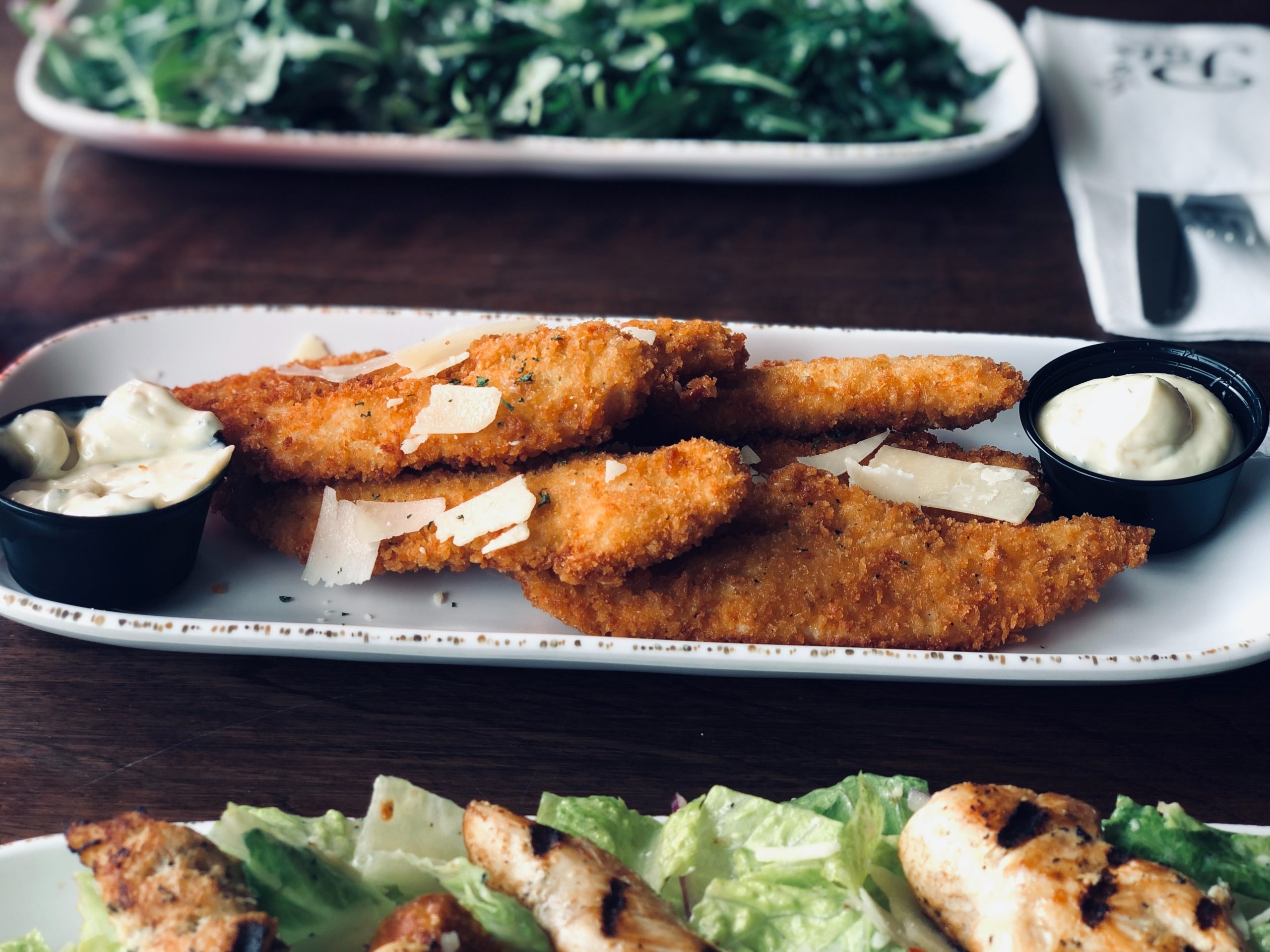If you’ve ever wondered how to Freeze Fish Fillets? You’ve come to the right place. This article will guide you on how to properly freeze fish fillets and store them. You can freeze fish fillets in a variety of ways. You can vacuum seal the fillets, dry them off and prevent freezer burn, and even use Ziplock freezer bags. These simple steps will help you freeze fish fillets without compromising the quality of the fish.

How to Freeze Fish Fillets?
Take water in a shallow pan made of metal, foil, or plastic, put the fish, cover it with water, and then freeze. Wrap the container in freezer paper once it has frozen, label it, and then store it to stop the ice from evaporating. Fish fillets can be labeled, placed in freezer bags, wrapped in paper resistant to moisture and vapor, then frozen.
Fish can be frozen using three methods: vacuum sealing, freezer paper, plastic freezer bags, and ice glazing. All three methods will ensure that air does not come into contact with the fish during the freezing process. This is because fish do not like to be exposed to air, which can cause the meat to break down.
1. Using Ziplock Freezer Bags
If you’re searching for a quick and easy way to freeze fish fillets, try freezing them in ziplock freezer bags. These bags work great for fish fillets because they are made to be sealed. You can easily seal them without using a vacuum sealer, but it requires little work.
One method to get a longer life out of your fish is to vacuum seal them. This will extend their shelf life and make them less likely to have freezer burn. It will also ensure that the fish is free from any off-taste.
The U.S. Food and Drug Administration (FDA) has determined that all Ziploc brand containers and microwaveable Ziploc brand bags are safe for use at the room, refrigerator, and Freezer temperatures and those associated with defrosting reheating food in household appliances.
2. Using Plastic Containers
Fish can be frozen in glass jars or plastic containers designed for canning or freezing as long as you don’t overfill them (allocate 10% expansion during freezing) and make sure there is enough water (either in the form of glaze or another liquid) frozen with the product to prevent the fish from being exposed.
Two main categories of packing materials safe for freezing are rigid containers and flexible bags or wrapping. All packs can be placed in rigid plastic or glass containers, although liquid packs benefit the most from this packaging. Frozen food is considerably easier to extract from stiff containers with straight sides.
3. Vacuum Sealed
One of the greatest ways to preserve fish is to vacuum seal it. This will help the fish last longer, as it will be less likely to go bad. However, choosing a vacuum sealer that can give you a good seal each time is important. To vacuum seal fish fillets properly, you must know what to do before you begin.
The first step is to clean the fish thoroughly. If you use a vacuum sealer, rinse it thoroughly to remove residual salt. If the fish is completely dry, it will be easy to vacuum seal. Also, excess moisture will increase the risk of freezer burn. Once the fish is cleaned, store it on ice.
4. Fish Keeping in the Water
When preparing fish for the Freezer, it is best to keep them in water until you are ready to remove them. Keeping them in water will ensure their flesh remains fresh for several days. Once you have removed them from the water, it is important to carefully clean them to remove any remaining slime, soil, or entrails. You can then wrap them in cling wrap and place them on crushed ice. These measures will ensure that the fish remain fresh and tasty for up to five days.
5. Using Commercial Freezing Equipment
Commercial equipment is much more effective than the equipment you can use at home when it comes to freezing fish. The commercial process is much faster than you can do in your kitchen. The freezers are designed to freeze products in as little as a few minutes. There are several types of commercial freezing equipment to choose from.
Some have parallel cooling plates that prevent the product from expanding during freezing. This is important because water expands when it freezes into ice. Another type of equipment is called a vertical plate freezer. This type of Freezer features a series of small chambers between 25 and 130 cm deep, which makes it perfect for freezing whole fish.
The excellent quality product generated through pressure freezing at 200 MPa can be preserved during frozen storage for up to 3 months. Lower pressures (100 MPa) are sufficient to produce stable ice crystals for extended storage times.
Is Freezing Fish Cooked or Uncooked Preferable?
Fish with thick, sturdy meat, like rockfish, cobia, or Mahi Mahi, hold up well when frozen. Softer-fleshed fish should be consumed fresh because they do not freeze well, especially fatty and oily fish like bluefish and Spanish mackerel.
Salmon and tuna freeze pretty well due to their high-fat content, but their new form is best. While it is ideal for freezing fish while still fresh, you can also do so without any problems after it has been cooked. This is perfect if you have leftover fish from a fish-based meal or have cooked more fillets than you need.
How to Prevent Freezer Burn?
This common problem occurs when meats are exposed to moisture or air during storage. A fantastic method for avoiding freezer burn is to dry meats and fish before storing them in the Freezer. However, this process can be time-consuming and complicated. Regardless of how you prepare your fish fillets, there are several tips that you can use to prevent freezer burn.
Before freezing fish, make sure you clean it thoroughly. Once cleaned, remove any excess water, then store them in a freezer-safe plastic bag or vacuum-sealing bag. Make sure that the bag is the right size for the fish fillets. Ensure the fillets are completely free from mucus and bacteria, creating an off-flavor after long-term storage.
How do you Dry Fish Fillets?
The quickest way to dry your fish is in an oven or dehydrator. Depending on the size of your fish, set your oven to 160–180 degrees Fahrenheit if you’re using one. The fish should be gutted, descaled, and cleaned inside and outside. The drying process will be hampered if any bad parts are left in the fish.
Drying off fish fillets before freezer storage is crucial to ensuring that the meat remains moist and succulent. You can dry them in two ways: dipping them in ice water or placing them in a zip-top freezer bag. Alternatively, you can use tap or salt water and vacuum-seal them for extra freshness.
It’s also important to remove all excess moisture and air from fillets. These factors can contribute to freezer burn, which can spoil the taste and texture of the meat. Using a vacuum-sealing machine to remove air will eliminate the risk of freezer burn. Check zip-top bags for air pockets, and use butcher paper to prevent plastic from tearing.
Should I Wash the Fish Before Freezing?
Always wash everything you’ll be putting in the Freezer under cold, running water, and then pat it dry. The goal is to wash out bacteria and mucous that could cause bad flavors in the Freezer. Keep in mind that when freezing fish, the air is your adversary.
How to Make Frozen Fish Fillets in the Air Fryer?
Begin by preheating the Air Fryer to 390°F for 5 minutes before cooking frozen fish fillets. In a small dish, mix the dried seasoning ingredients. After halves, the lemon, squeeze about a teaspoon of lemon juice over the fish before seasoning it. Exit the Freezer with your frozen cod fillets.
Place a slice of lemon on each fillet by slicing the remaining lemon into thin slices. Make use of a nonstick-coated grill plate for an Air Fryer. Arrange the frozen fillets on the grill pan to ensure they are distinct. Test to see if the fillets are done after closing the grill basket and heating it to 390°F for 12 minutes.
Depending on how thick each piece is and how “done” you prefer your fish fillets, timing can vary just as it can in an air fryer. After removing the fish from the fryer and just before serving, add fresh or dried parsley. Add another two minutes and recheck your fish if it still needs to be done.
Conclusion
If you cooked a large number of frozen fish fillets in the air fryer or have leftovers, there are several ways to keep them. Fish can be kept in the refrigerator if you have one. Allow the fish to cool, then put them in an airtight container. For two days, keep. You can store them in the Freezer to hold them fresher for longer. Refrigerate the fish until it reaches room temperature before storing it.
